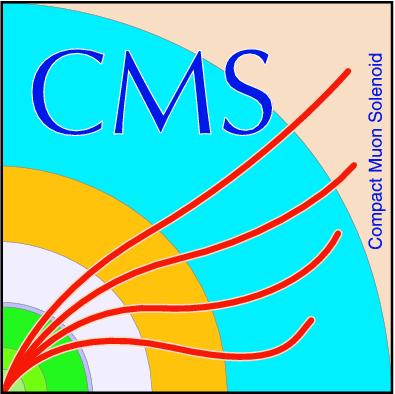
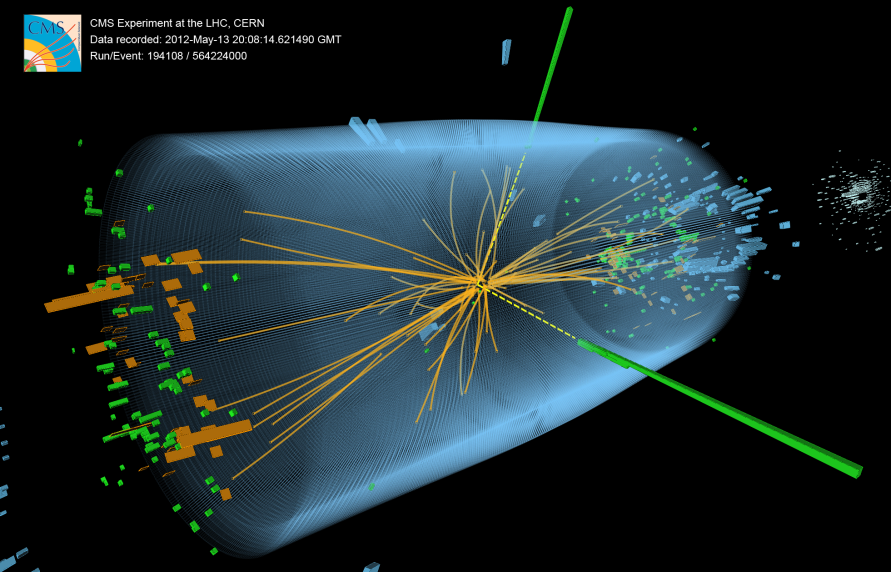
Compact Muon Solenoid
LHC, CERN
| CMS-PAS-HIG-21-007 | ||
| Search for Higgs boson decays to invisible particles produced in association with a top-quark pair or a vector boson in proton-proton collisions at √s= 13 TeV and combination across Higgs production modes | ||
| CMS Collaboration | ||
| September 2022 | ||
| Abstract: A search for Higgs boson decays to invisible particles, produced in association with a top quark pair or a vector boson decaying in a fully hadronic final state, has been performed using 138 fb−1 of proton-proton collision data collected at √s= 13 TeV by the CMS experiment at the LHC. Events are categorized based on jet multiplicity, the number of jets stemming from b quark decays as well as the number of hadronically decaying boosted top quarks and W bosons reconstructed as a single large-cone jet in the detector. The observed (expected) limit set on the invisible branching fraction of the 125 GeV Higgs boson is 0.47 (0.40), assuming standard model production cross sections. Finally, the results of this analysis are combined with previous CMS measurements of the Higgs to invisible branching fraction carried out at √s= 7, 8, and 13 TeV in complementary production modes. The combined limit on the branching fraction is 0.15 (0.08), the most stringent result from direct searches at CMS to date. | ||
|
Links:
CDS record (PDF) ;
CADI line (restricted) ;
These preliminary results are superseded in this paper, Submitted to EPJC. The superseded preliminary plots can be found here. |
||
| Figures | |

png pdf |
Figure 1:
Feynman diagrams for the standard model Higgs boson production channels VH and ttH. |
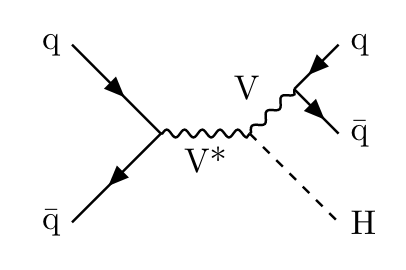
png |
Figure 1-a:
Feynman diagrams for the standard model Higgs boson production channels VH and ttH. |

png |
Figure 1-b:
Feynman diagrams for the standard model Higgs boson production channels VH and ttH. |
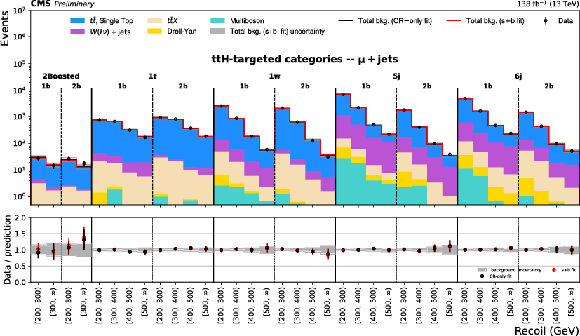
png pdf |
Figure 2:
Distributions of recoil in the ttH categories for the μ+jets CR using 2016 -- 2018 data. The black histogram shows the background prediction from the fit to all CRs, while the red histogram shows the yields with the inclusion of the SR and H→inv signal in the fit (s+b fit). |

png pdf |
Figure 3:
Distributions of recoil in the VH categories for the μ+jets CR using 2016 -- 2018 data. The black histogram shows the background prediction from the fit to all CRs, while the red histogram shows the yields with the inclusion of the SR and H→inv signal in the fit (s+b fit). |

png pdf |
Figure 4:
Distributions of recoil in the ttH categories for the e+jets CR using 2016 -- 2018 data. The black histogram shows the background prediction from the fit to all CRs, while the red histogram shows the yields with the inclusion of the SR and H→inv signal in the fit (s+b fit). |
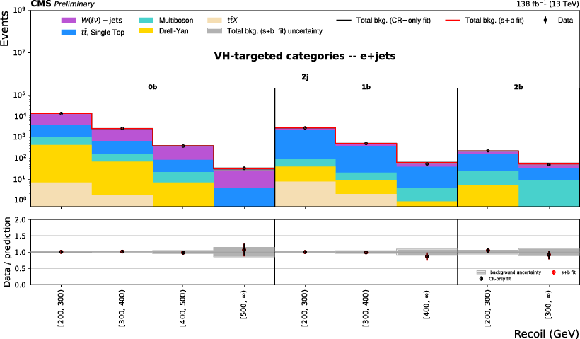
png pdf |
Figure 5:
Distributions of recoil in the VH categories for the e+jets CR using 2016 -- 2018 data. The black histogram shows the background prediction from the fit to all CRs, while the red histogram shows the yields with the inclusion of the SR and H→inv signal in the fit (s+b fit). |
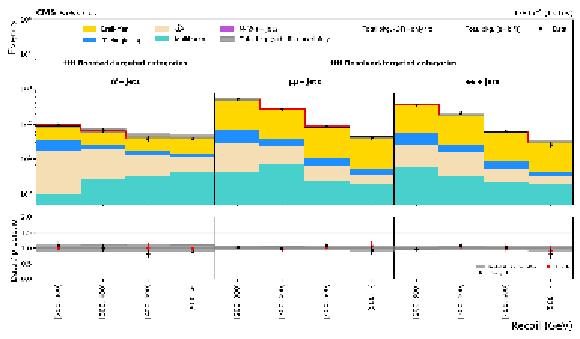
png pdf |
Figure 6:
Distributions of recoil in the ttH categories for the ℓℓ + jets, μμ+jets and ee+jets CR using 2016 -- 2018 data. The black histogram shows the background prediction from the fit to all CRs, while the red histogram shows the yields with the inclusion of the SR and H→inv signal in the fit (s+b fit). |
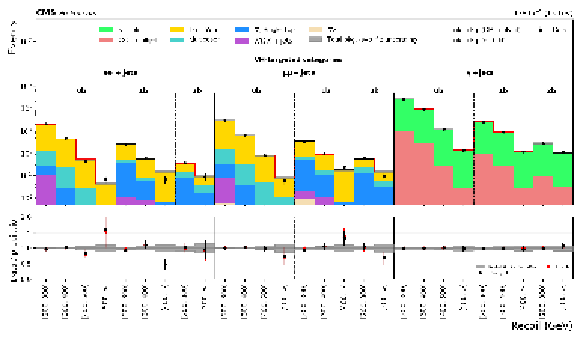
png pdf |
Figure 7:
Distributions of recoil in the VH categories for the ee+jets, μμ+jets and γ+jets CR using 2016 -- 2018 data. The black histogram shows the background prediction from the fit to all CRs, while the red histogram shows the yields with the inclusion of the SR and H→inv signal in the fit (s+b fit). |

png pdf |
Figure 8:
Distributions of recoil in the ttH categories for the SR using 2016 -- 2018 data. The black histogram shows the background prediction from the fit to all CRs, while the red histogram shows the yields with the inclusion of the SR and H→inv signal in the fit, with a best fit value of ˆμ=0.10 (s+b fit). |
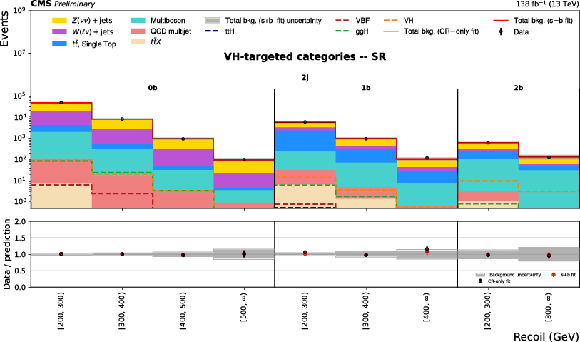
png pdf |
Figure 9:
Distributions of recoil in the ttH categories for the SR using 2016 -- 2018 data. The black histogram shows the background prediction from the fit to all CRs, while the red histogram shows the yields with the inclusion of the SR and H→inv signal in the fit, with a best fit value of ˆμ=0.10 (s+b fit). |

png pdf |
Figure 10:
Left: 95% CL expected and observed limits for ttH and VH using 2016 -- 2018 data.\\ Right: the profile likelihood scan corresponding to expected and observed limits in the fit to ttH and VH together, using 2016 -- 2018 data. |
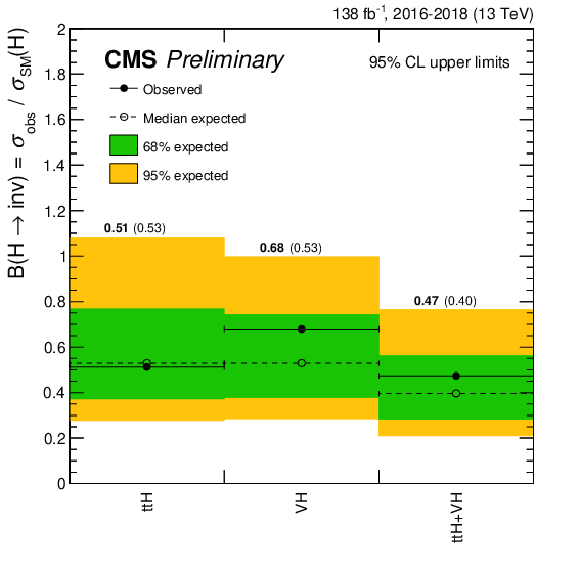
png pdf |
Figure 10-a:
Left: 95% CL expected and observed limits for ttH and VH using 2016 -- 2018 data.\\ Right: the profile likelihood scan corresponding to expected and observed limits in the fit to ttH and VH together, using 2016 -- 2018 data. |

png pdf |
Figure 10-b:
Left: 95% CL expected and observed limits for ttH and VH using 2016 -- 2018 data.\\ Right: the profile likelihood scan corresponding to expected and observed limits in the fit to ttH and VH together, using 2016 -- 2018 data. |
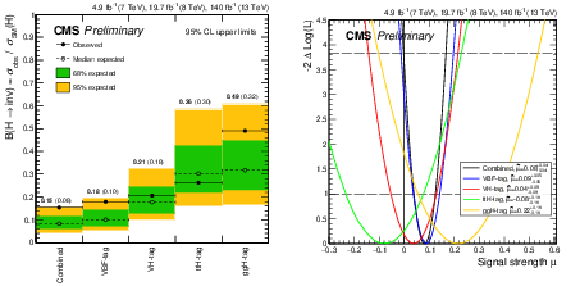
png pdf |
Figure 11:
Left: exclusion limits at 95% CL on the branching fraction of the Higgs boson to invisible final states. The results are shown separately for each Higgs production mode for Runs 1 and 2, as well as combined across modes.Right: scan of the profiled negative log-likelihood as a function of the signal strength. The left panel shows the scans for the analyses using the Run 1 and 2 datasets, broken down by Higgs production mode. |

png pdf |
Figure 11-a:
Left: exclusion limits at 95% CL on the branching fraction of the Higgs boson to invisible final states. The results are shown separately for each Higgs production mode for Runs 1 and 2, as well as combined across modes.Right: scan of the profiled negative log-likelihood as a function of the signal strength. The left panel shows the scans for the analyses using the Run 1 and 2 datasets, broken down by Higgs production mode. |
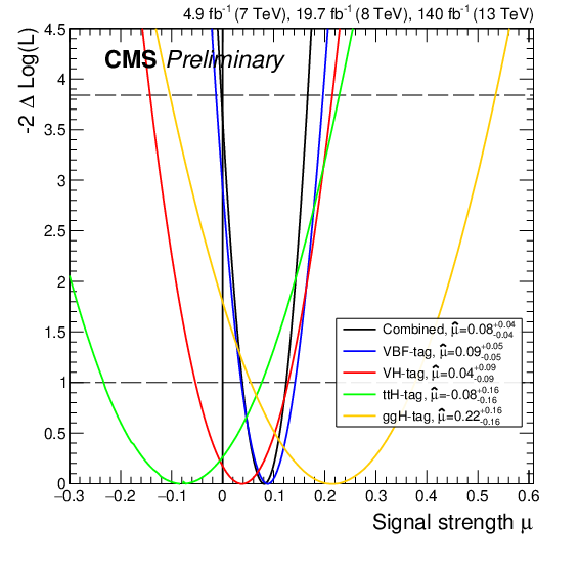
png pdf |
Figure 11-b:
Left: exclusion limits at 95% CL on the branching fraction of the Higgs boson to invisible final states. The results are shown separately for each Higgs production mode for Runs 1 and 2, as well as combined across modes.Right: scan of the profiled negative log-likelihood as a function of the signal strength. The left panel shows the scans for the analyses using the Run 1 and 2 datasets, broken down by Higgs production mode. |
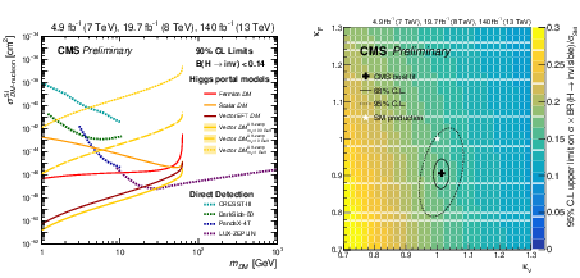
png pdf |
Figure 12:
Left: Upper limits on σSIDM−nucleon as a function of DM mass mDM. Results are presented for a fermion (red) and scalar (orange) DM candidate. In addition, a vector DM candidate is studied using and EFT approach (black) in addition to a recent UV-complete EFT approach (yellow) for a dark Higgs mass of m2= 1, 10, 100 GeV. Results are compared to direct detection searches from CRESST-III [81], DarkSide-50 [82], PandaX-4T [83] and LUX-ZEPLIN [84]. Right: Observed 95% CL upper limits on (σ/σSM) B(H→inv) as function of coupling strength modifiers, κV and κF, for a Higgs boson of mass 125 GeV. Best estimates for κV and κF from Ref. [13] are shown as a black cross together with 68% and 95% CL contours. |
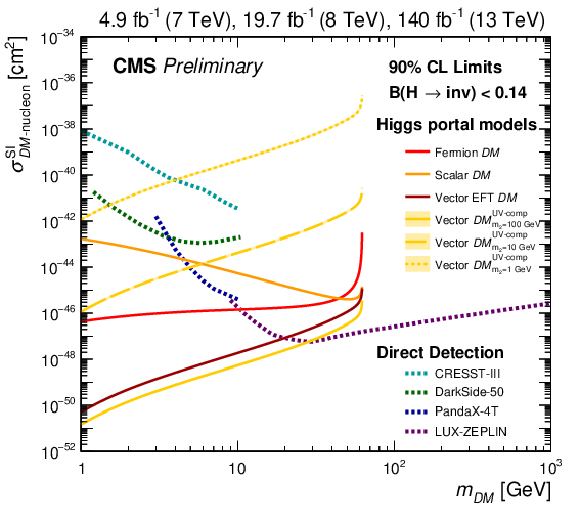
png pdf |
Figure 12-a:
Left: Upper limits on σSIDM−nucleon as a function of DM mass mDM. Results are presented for a fermion (red) and scalar (orange) DM candidate. In addition, a vector DM candidate is studied using and EFT approach (black) in addition to a recent UV-complete EFT approach (yellow) for a dark Higgs mass of m2= 1, 10, 100 GeV. Results are compared to direct detection searches from CRESST-III [81], DarkSide-50 [82], PandaX-4T [83] and LUX-ZEPLIN [84]. Right: Observed 95% CL upper limits on (σ/σSM) B(H→inv) as function of coupling strength modifiers, κV and κF, for a Higgs boson of mass 125 GeV. Best estimates for κV and κF from Ref. [13] are shown as a black cross together with 68% and 95% CL contours. |
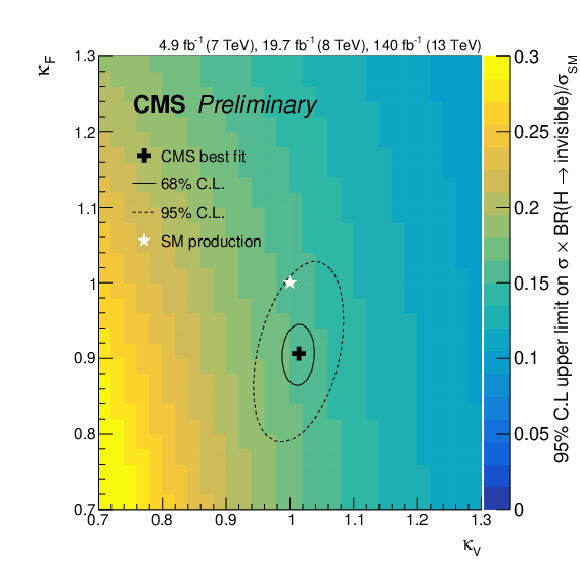
png pdf |
Figure 12-b:
Left: Upper limits on σSIDM−nucleon as a function of DM mass mDM. Results are presented for a fermion (red) and scalar (orange) DM candidate. In addition, a vector DM candidate is studied using and EFT approach (black) in addition to a recent UV-complete EFT approach (yellow) for a dark Higgs mass of m2= 1, 10, 100 GeV. Results are compared to direct detection searches from CRESST-III [81], DarkSide-50 [82], PandaX-4T [83] and LUX-ZEPLIN [84]. Right: Observed 95% CL upper limits on (σ/σSM) B(H→inv) as function of coupling strength modifiers, κV and κF, for a Higgs boson of mass 125 GeV. Best estimates for κV and κF from Ref. [13] are shown as a black cross together with 68% and 95% CL contours. |
| Tables | |
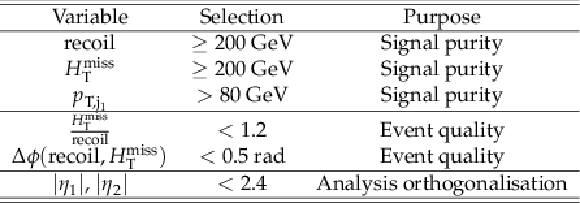
png pdf |
Table 1:
Common selection applied to all categories and regions in this analysis. |
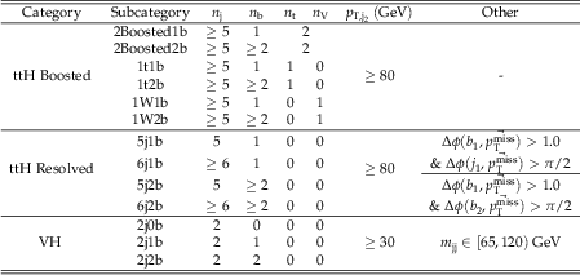
png pdf |
Table 2:
Categorisation of the ttH and VH production modes in the analysis. |

png pdf |
Table 3:
Summary of all CR requirements, excluding suppression cuts for QCD processes, and excluding the cut of Δϕ(EmissT,EmisstrackT)<π/ 2 applied to the ttH categories in the dilepton CRs. |
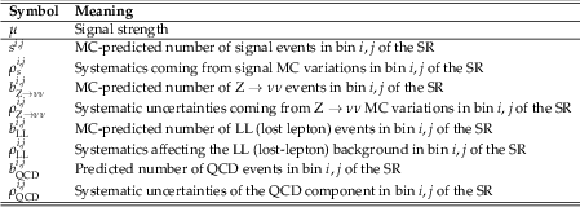
png pdf |
Table 4:
Meaning of symbols used in the likelihood function. |
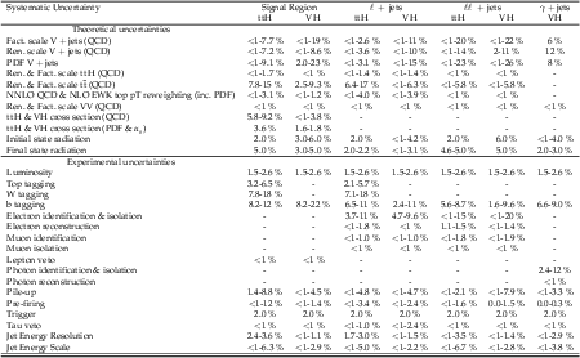
png pdf |
Table 5:
The percentage ranges corresponding to the pre-fit minimum/maximum deviation of a given systematic from the nominal background MC yield across regions. Note that not all systematics are correlated across years and categories, but are always correlated across region in all regions to which they are applied. |
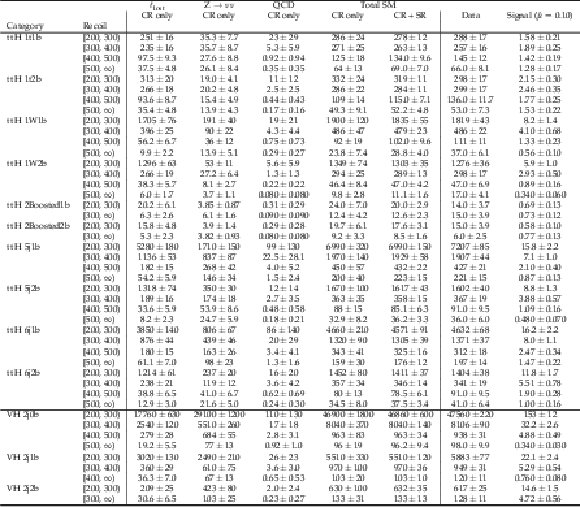
png pdf |
Table 6:
Total Run 2 pre- and post-fit yields in the SR. Errors are inclusive of statistical and systematic contributions. |
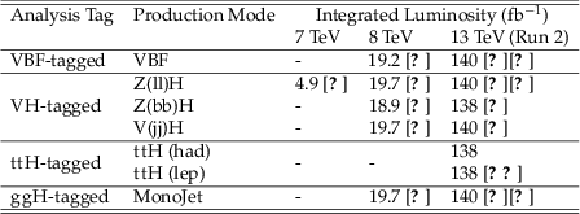
png pdf |
Table 7:
Data sets and their respective luminosities used for each production mode across Runs 1 and 2. |
| Summary |
| A search for invisible decays of Higgs bosons produced in association with top quark pairs (ttH) or vector bosons (VH) is presented. The analysis is based on 138 fb−1 of pp data collected at √s= 13 TeV during the 2016 -- 2018 data taking period by the CMS experiment at the LHC. The ttH production mechanism is investigated using fully hadronic final states with b jets, including event categories with boosted top quark or vector boson candidates. The analysis of VH production focuses on a di-jet pair with an invariant mass that is compatible with that of a W or Z boson. Three types of CRs in data, with one or two leptons, or a photon are used directly in the fit to constrain the main SM backgrounds. In the absence of any significant excess in data, a 95% confidence level observed (expected) upper limit of 0.47 (0.40) is set on the Higgs boson to invisible branching fraction, assuming SM production cross sections. These results are combined with those obtained from Higgs production in vector boson fusion, associated production, gluon-gluon fusion as well as leptonic ttH and ZH decays to obtain an observed (expected) combined upper limit on the Higgs to invisible branching fraction of 0.15 (0.08) at 95% confidence level. |
| References | ||||
| 1 | F. Englert and R. Brout | Broken symmetry and the mass of gauge vector mesons | PRL 13 (1964) 321 | |
| 2 | P. W. Higgs | Broken symmetries, massless particles and gauge fields | PL 12 (1964) 132 | |
| 3 | P. W. Higgs | Broken symmetries and the masses of gauge bosons | PRL 13 (1964) 508 | |
| 4 | G. S. Guralnik, C. R. Hagen, and T. W. B. Kibble | Global conservation laws and massless particles | PRL 13 (1964) 585 | |
| 5 | P. W. Higgs | Spontaneous symmetry breakdown without massless bosons | PR 145 (1966) 1156 | |
| 6 | T. W. B. Kibble | Symmetry breaking in non-abelian gauge theories | PR 155 (1967) 1554 | |
| 7 | CMS Collaboration | Observation of a New Boson at a Mass of 125 GeV with the CMS Experiment at the LHC | PLB 716 (2012) 30 | CMS-HIG-12-028 1207.7235 |
| 8 | CMS Collaboration | Observation of a New Boson with Mass Near 125 GeV in pp Collisions at √s = 7 and 8 TeV | JHEP 06 (2013) 081 | CMS-HIG-12-036 1303.4571 |
| 9 | ATLAS Collaboration | Observation of a new particle in the search for the Standard Model Higgs boson with the ATLAS detector at the LHC | PLB 716 (2012) 1 | 1207.7214 |
| 10 | ATLAS Collaboration | Combined measurements of Higgs boson production and decay using up to 80 fb-1 of proton-proton collision data at √s= 13 TeV collected with the ATLAS experiment | Phys. Rev. D 101 ), no. 1, 0, 2020 link |
1909.02845 |
| 11 | ATLAS Collaboration | A detailed map of Higgs boson interactions by the ATLAS experiment ten years after the discovery | Nature 607 ), no. 7917, 52, 2022 link |
2207.00092 |
| 12 | CMS Collaboration | Combined measurements of Higgs boson couplings in proton-proton collisions at √s= 13 TeV | Eur. Phys. J. C 79 ), no. 5, 421, 2019 link |
CMS-HIG-17-031 1809.10733 |
| 13 | CMS Collaboration | A portrait of the Higgs boson by the CMS experiment ten years after the discovery | Nature 607 ), no. 7917, 60, 2022 link |
CMS-HIG-22-001 2207.00043 |
| 14 | Particle Data Group Collaboration | Review of Particle Physics | PTEP ), no. 8, 083C01, 2020 link |
|
| 15 | G. Bélanger et al. | The MSSM invisible Higgs in the light of dark matter and g-2 | PLB 519 (2001) 93 | hep-ph/0106275 |
| 16 | A. Datta et al. | Linear collider signals of an invisible Higgs boson in theories of large extra dimensions | PRD 70 (2004) 075003 | hep-ph/0404056 |
| 17 | D. Dominici and J. F. Gunion | Invisible Higgs decays from Higgs-graviscalar mixing | PRD 80 (2009) 115006 | 0902.1512 |
| 18 | S. Baek et al. | Higgs portal vector dark matter: revisited | JHEP 05 (2013) 036 | 1212.2131 |
| 19 | A. Djouadi et al. | Implications of LHC searches for Higgs--portal dark matter | PLB 709 (2012) 65 | 1112.3299 |
| 20 | A. Djouadi et al. | Direct detection of Higgs--portal dark matter at the LHC | EPJC 73 (2013) 2455 | 1205.3169 |
| 21 | A. Beniwal et al. | Combined analysis of effective Higgs--portal dark matter models | PRD 93 (2016) 115016 | 1512.06458 |
| 22 | R. E. Shrock and M. Suzuki | Invisible decays of Higgs bosons | PLB 110 (1982) 250 | |
| 23 | S. Kanemura et al. | Can WIMP Dark Matter overcome the Nightmare Scenario? | PRD 82 (2010) 055026 | 1005.5651 |
| 24 | D. Abercrombie et al. | Dark Matter benchmark models for early LHC Run-2 Searches: Report of the ATLAS/CMS Dark Matter Forum | Phys. Dark Univ. 27 (2020) 100371 | 1507.00966 |
| 25 | ATLAS Collaboration | Combination of searches for invisible Higgs boson decays with the ATLAS experiment | Phys. Rev. Lett. 122 ), no. 23, 231801, 2019 link |
1904.05105 |
| 26 | CMS Collaboration | Search for invisible decays of the Higgs boson produced via vector boson fusion in proton-proton collisions at √s= 13 TeV | PRD 105 (2022) 092007 | CMS-HIG-20-003 2201.11585 |
| 27 | ATLAS Collaboration | Search for an invisibly decaying Higgs boson or dark matter candidates produced in association with a Z boson in pp collisions at √s= 13 TeV with the ATLAS detector | PLB 776 (2018) 318 | 1708.09624 |
| 28 | CMS Collaboration | Search for dark matter produced in association with a leptonically decaying Z boson in proton-proton collisions at √s= 13 TeV | Eur. Phys. J. C 81 ), no. 1, 13, , . [Erratum: Eur.Phys.J.C 81, 333 )], 2021 link |
CMS-EXO-19-003 2008.04735 |
| 29 | ATLAS Collaboration | Search for new phenomena in events with an energetic jet and missing transverse momentum in pp collisions at √s =13 TeV with the ATLAS detector | Phys. Rev. D 103 ), no. 11, 1, 2021 link |
2102.10874 |
| 30 | CMS Collaboration | Search for new particles in events with energetic jets and large missing transverse momentum in proton-proton collisions at √s = 13 TeV | JHEP 11 (2021) 153 | CMS-EXO-20-004 2107.13021 |
| 31 | ATLAS Collaboration | Search for associated production of a Z boson with an invisibly decaying Higgs boson or dark matter candidates at s=13 TeV with the ATLAS detector | PLB 829 (2022) 137066 | 2111.08372 |
| 32 | ATLAS Collaboration | Search for invisible Higgs-boson decays in events with vector-boson fusion signatures using 139 fb−1 of proton-proton data recorded by the ATLAS experiment | JHEP 08 (2022) 104 | 2202.07953 |
| 33 | ATLAS Collaboration | Constraints on spin-0 dark matter mediators and invisible Higgs decays using ATLAS 13 TeV pp collision data with two top quarks and missing energy in the final state | ATLAS-CONF-2022-007, 2022 | |
| 34 | CMS Collaboration | First constraints on invisible Higgs boson decays using ttH production at √s= 13 TeV | CMS-PAS-HIG-18-008 | CMS-PAS-HIG-18-008 |
| 35 | CMS Collaboration | The CMS experiment at the CERN LHC | JINST 3 (2008) S08004 | |
| 36 | CMS Collaboration | Performance of the CMS Level-1 trigger in proton-proton collisions at √s= 13 TeV | JINST 15 (2020) P10017 | CMS-TRG-17-001 2006.10165 |
| 37 | CMS Collaboration | The CMS trigger system | JINST 12 (2017) P01020 | CMS-TRG-12-001 1609.02366 |
| 38 | CMS Collaboration | Electron and photon reconstruction and identification with the CMS experiment at the CERN LHC | JINST 16 (2021) P05014 | CMS-EGM-17-001 2012.06888 |
| 39 | CMS Collaboration | Performance of the CMS muon detector and muon reconstruction with proton-proton collisions at √s= 13 TeV | JINST 13 (2018) P06015 | CMS-MUO-16-001 1804.04528 |
| 40 | CMS Collaboration | Description and performance of track and primary-vertex reconstruction with the CMS tracker | JINST 9 (2014) P10009 | CMS-TRK-11-001 1405.6569 |
| 41 | CMS Collaboration | CMS Luminosity Measurements for the 2016 Data Taking Period | Technical Report , CERN, Geneva, 2017 CMS-PAS-LUM-17-001 |
CMS-PAS-LUM-17-001 |
| 42 | CMS Collaboration | CMS luminosity measurement for the 2017 data-taking period at √s= 13 TeV | Technical Report , CERN, Geneva, 2018 CMS-PAS-LUM-17-004 |
CMS-PAS-LUM-17-004 |
| 43 | CMS Collaboration | CMS luminosity measurement for the 2018 data-taking period at √s= 13 TeV | Technical Report , CERN, Geneva, 2019 CMS-PAS-LUM-18-002 |
CMS-PAS-LUM-18-002 |
| 44 | CMS Collaboration | Precision luminosity measurement in proton-proton collisions at √s= 13 TeV in 2015 and 2016 at CMS | Eur. Phys. J. C 81 ), no. 9, 800, 2021 link |
CMS-LUM-17-003 2104.01927 |
| 45 | C. Oleari | The POWHEG-BOX | Nucl. Phys. B Proc. Suppl. 205-206 ) 36, 2010 link |
1007.3893 |
| 46 | J. Alwall et al. | The automated computation of tree-level and next-to-leading order differential cross sections, and their matching to parton shower simulations | JHEP 07 (2014) 079 | 1405.0301 |
| 47 | J. Alwall et al. | The automated computation of tree-level and next-to-leading order differential cross sections, and their matching to parton shower simulations | JHEP 07 (2014) 079 | 1405.0301 |
| 48 | S. Alioli et al. | NLO single-top production matched with shower in POWHEG: s- and t-channel contributions | [Erratum: JHEP 02, 011 )], 2009 JHEP 09 (2009) 111 |
0907.4076 |
| 49 | CMS Collaboration | Extraction and validation of a new set of CMS PYTHIA8 tunes from underlying-event measurements | Eur. Phys. J. C 80 ), no. 1, 4, 2020 link |
CMS-GEN-17-001 1903.12179 |
| 50 | GEANT4 Collaboration | GEANT4--a simulation toolkit | NIM A 506 (2003) 250 | |
| 51 | NNPDF Collaboration | Parton distributions from high-precision collider data | Eur. Phys. J. C 77 ), no. 10, 663, 2017 link |
1706.00428 |
| 52 | H. Hartanto et al. | Higgs boson production in association with top quarks in the POWHEG BOX | Phys. Rev. D 91 ), no. 9, 094003, 2015 link |
1501.04498 |
| 53 | P. Nason and C. Oleari | NLO Higgs boson production via vector-boson fusion matched with shower in POWHEG | JHEP 02 (2010) 037 | 0911.5299 |
| 54 | G. Luisoni et al. | HW±/HZ + 0 and 1 jet at NLO with the POWHEG BOX interfaced to GoSam and their merging within MiNLO | JHEP 10 (2013) 083 | 1306.2542 |
| 55 | E. Bagnaschi et al. | Higgs production via gluon fusion in the POWHEG approach in the SM and in the MSSM | JHEP 02 (2012) 088 | 1111.2854 |
| 56 | LHC Higgs Cross Section Working Group | Handbook of LHC Higgs cross sections: 4. Deciphering the nature of the Higgs sector | CERN Report CERN-2017-002-M, 2016 link |
1610.07922 |
| 57 | J. M. Campbell et al. | Top-Pair Production and Decay at NLO Matched with Parton Showers | JHEP 04 (2015) 114 | 1412.1828 |
| 58 | E. Re | Single-top Wt-channel production matched with parton showers using the POWHEG method | EPJC 71 (2011) 1547 | 1009.2450 |
| 59 | T. Melia et al. | W+W-, WZ and ZZ production in the POWHEG BOX | JHEP 11 (2011) 078 | 1107.5051 |
| 60 | CMS Collaboration | Particle-flow reconstruction and global event description with the CMS detector | JINST 12 (2017) P10003 | CMS-PRF-14-001 1706.04965 |
| 61 | M. Cacciari and G. P. Salam | Pileup subtraction using jet areas | PLB 659 (2008) 119 | 0707.1378 |
| 62 | CMS Collaboration | Performance of CMS Muon Reconstruction in pp Collision Events at √s= 7 TeV | JINST 7 (2012) P10002 | CMS-MUO-10-004 1206.4071 |
| 63 | CMS Collaboration | Performance of Photon Reconstruction and Identification with the CMS Detector in Proton-Proton Collisions at sqrt(s) = 8 TeV | JINST 10 (2015) P08010 | CMS-EGM-14-001 1502.02702 |
| 64 | CMS Collaboration | Performance of electron reconstruction and selection with the CMS detector in proton-proton collisions at √s= 8 TeV | JINST 10 (2015) P06005 | CMS-EGM-13-001 1502.02701 |
| 65 | M. Cacciari, G. P. Salam, and G. Soyez | The anti-kt jet clustering algorithm | JHEP 04 (2008) 063 | 0802.1189 |
| 66 | CMS Collaboration | Jet energy scale and resolution in the CMS experiment in pp collisions at 8 TeV | JINST 12 ), no. 02, P, 2017 link |
CMS-JME-13-004 1607.03663 |
| 67 | CMS Collaboration | Study of Pileup Removal Algorithms for Jets | Technical Report , CERN, Geneva, 2014 CMS-PAS-JME-14-001 |
CMS-PAS-JME-14-001 |
| 68 | CMS Collaboration | Identification of heavy-flavour jets with the CMS detector in pp collisions at 13 TeV | JINST 13 ), no. 05, P05011, 2018 link |
CMS-BTV-16-002 1712.07158 |
| 69 | CMS Collaboration | Identification of heavy, energetic, hadronically decaying particles using machine-learning techniques | JINST 15 ), no. 06, P06005, 2020 link |
CMS-JME-18-002 2004.08262 |
| 70 | A. J. Larkoski et al. | Soft Drop | JHEP 05 (2014) 146 | 1402.2657 |
| 71 | T. Sakuma, H. Flaecher, and D. Smith | Alternative angular variables for suppression of QCD multijet events in new physics searches with missing transverse momentum at the LHC | 3, 2018 | 1803.07942 |
| 72 | J. M. Lindert et al. | Precise predictions for V+ jets dark matter backgrounds | Eur. Phys. J. C 77 ), no. 12, 829, 2017 link |
1705.04664 |
| 73 | CMS Collaboration | Searches for invisible decays of the higgs boson in pp collisions at √s = 7, 8, and 13 TeV | JHEP 02 (2017) 135 | CMS-HIG-16-016 1610.09218 |
| 74 | CMS Collaboration | Search for invisible decays of Higgs bosons in the vector boson fusion and associated ZH production modes | EPJC 74 (2014) 2980 | CMS-HIG-13-030 1404.1344 |
| 75 | CMS Collaboration | Search for dark matter in proton-proton collisions at 8 TeV with missing transverse momentum and vector boson tagged jets | [Erratum: JHEP 08, 035 )], 2016 JHEP 12 (2016) 083 |
CMS-EXO-12-055 1607.05764 |
| 76 | CMS Collaboration | Search for direct top squark pair production in events with one lepton, jets, and missing transverse momentum at 13 TeV with the CMS experiment | JHEP 05 (2020) 032 | CMS-SUS-19-009 1912.08887 |
| 77 | CMS Collaboration | Search for top squark pair production using dilepton final states in pp collision data collected at √s= 13 TeV | EPJC 81 (2021) 3 | CMS-SUS-19-011 2008.05936 |
| 78 | CMS Collaboration | Combined searches for the production of supersymmetric top quark partners in proton-proton collisions at √s= 13 TeV | EPJC 81 (2021) 970 | CMS-SUS-20-002 2107.10892 |
| 79 | M. Zaazoua et al. | Higgs Portal Vector Dark Matter Interpretation: Review of Effective Field Theory Approach and Ultraviolet Complete Models | LHEP 2022 (2022) 270 | 2107.01252 |
| 80 | ATLAS, CMS Collaboration | Searches for invisible Higgs boson decays with ATLAS and CMS | PoS EPS-HE ) 114, 2015 link |
|
| 81 | CRESST Collaboration | First results from the CRESST-III low-mass dark matter program | PRD 100 (2019) 102002 | 1904.00498 |
| 82 | DarkSide-50 Collaboration | Search for low-mass dark matter WIMPs with 12 ton-day exposure of DarkSide-50 | 7, 2022 | 2207.11966 |
| 83 | PandaX Collaboration | A First Search for Solar 8B Neutrino in the PandaX-4T Experiment using Neutrino-Nucleus Coherent Scattering | 7, 2022 | 2207.04883 |
| 84 | LZ Collaboration | First Dark Matter Search Results from the LUX-ZEPLIN (LZ) Experiment | 7, 2022 | 2207.03764 |
| 85 | LHC Higgs Cross Section Working Group | Handbook of LHC Higgs Cross Sections: 3. Higgs Properties | technical report, 7, 2013 link |
1307.1347 |

|
Compact Muon Solenoid LHC, CERN |
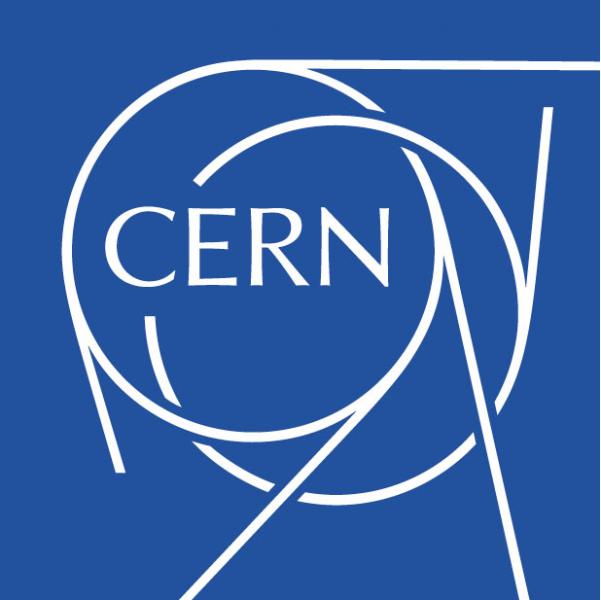
|
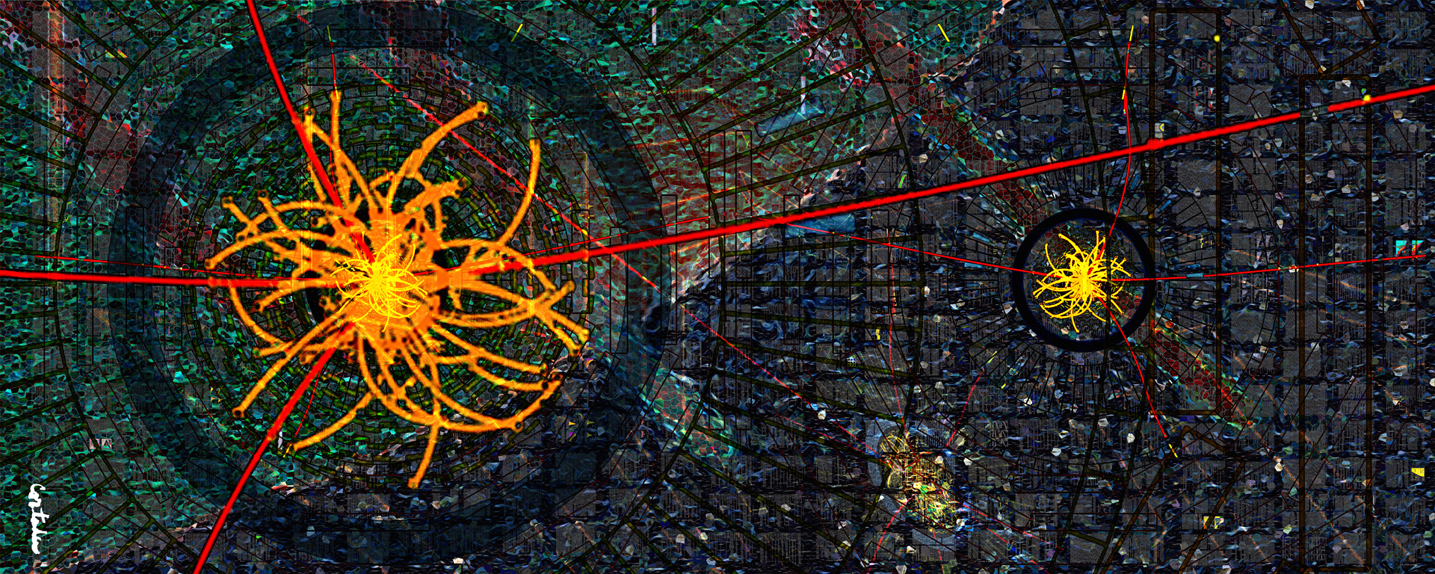
|
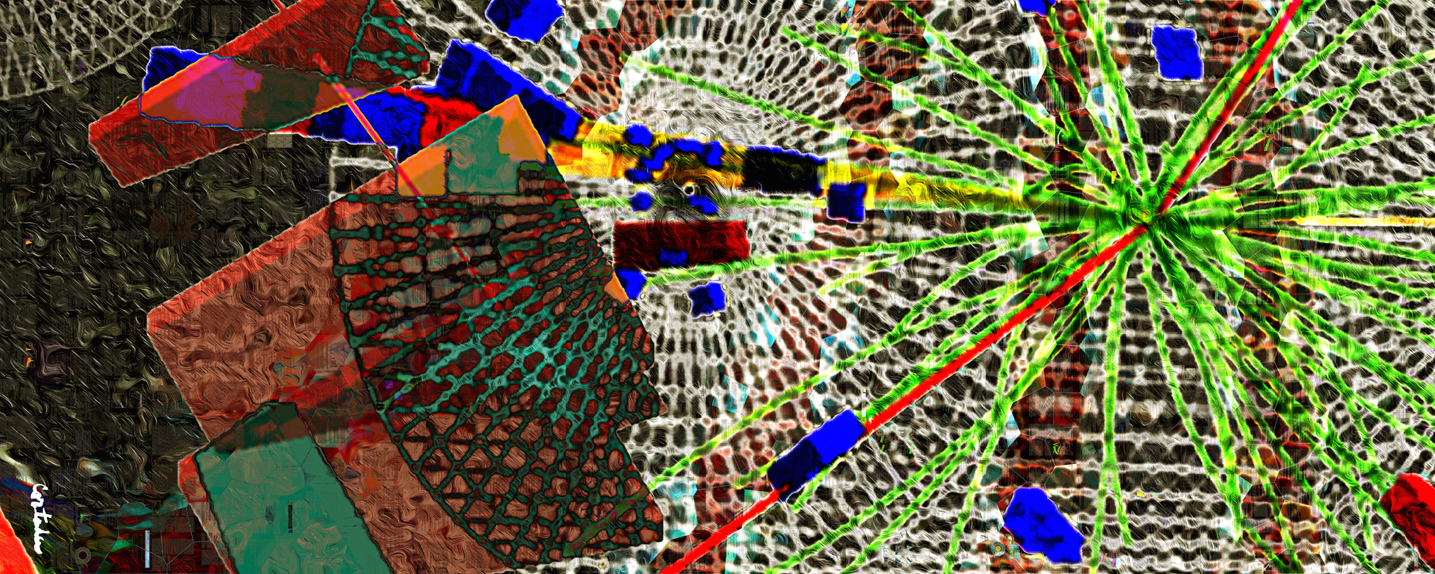
|
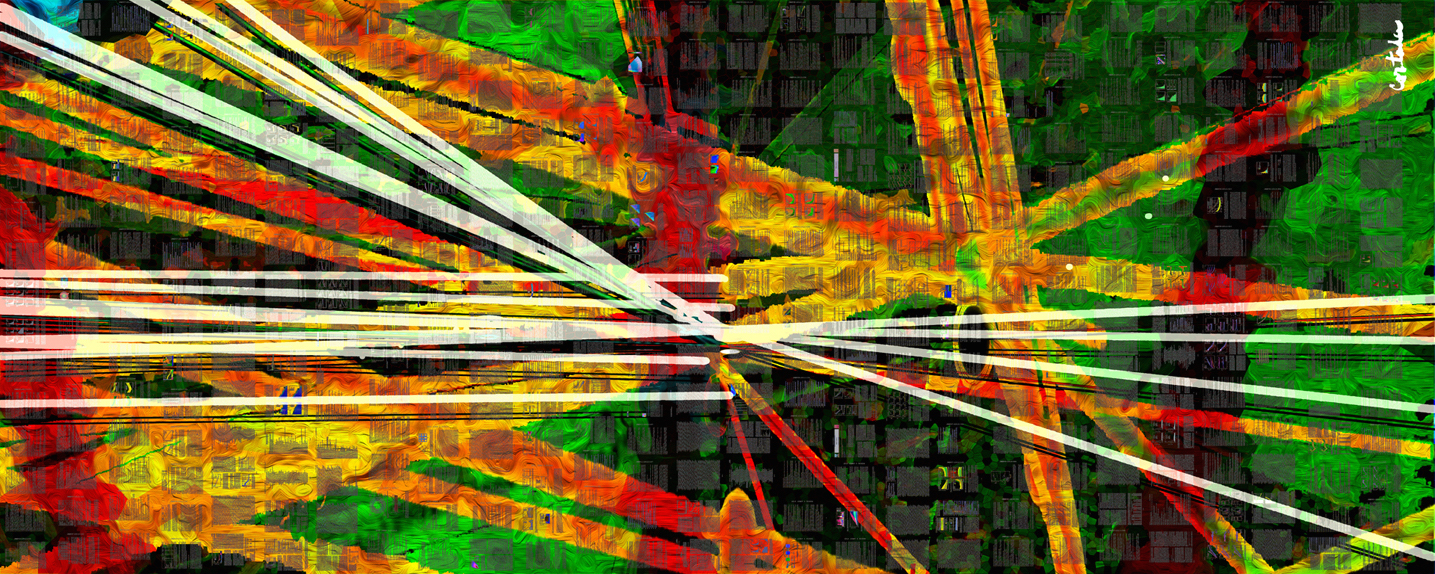
|
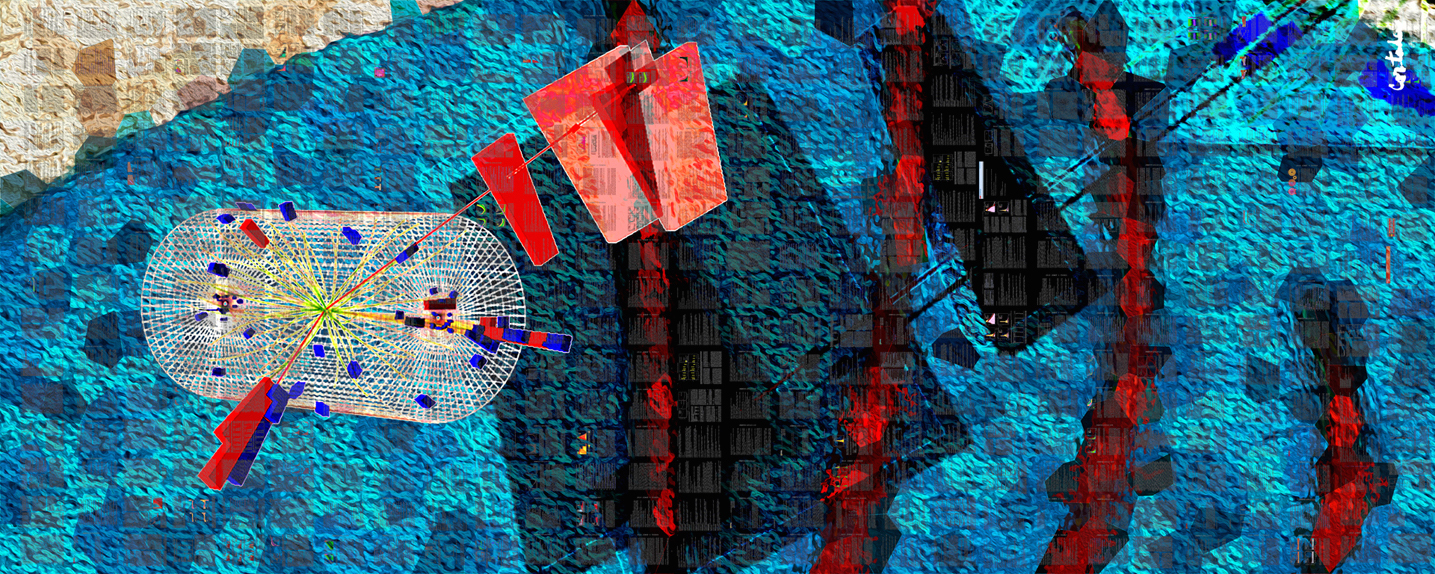
|
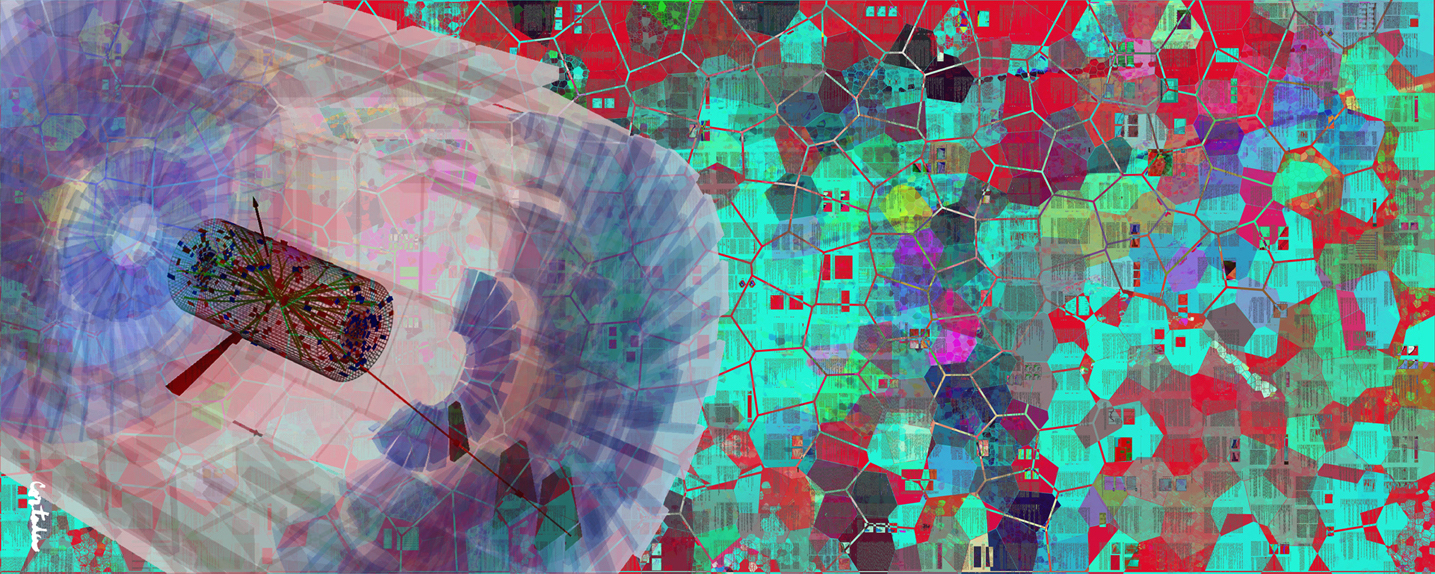
|